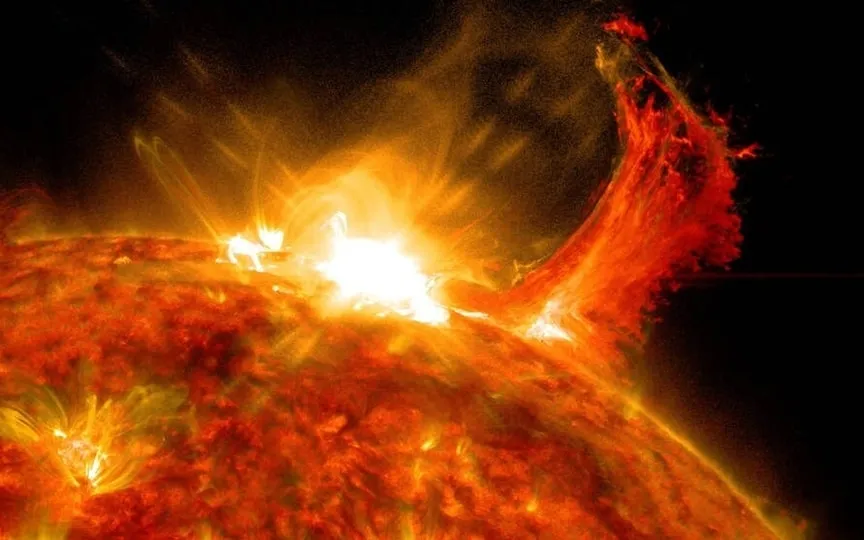NASA Detects Solar Flare Eruption on Sun, Possible Solar Storm Could Cause Blackouts in Australia
We have been fortunate so far with solar storms, despite several close calls. Although multiple solar flares have occurred recently, only one resulted in a coronal mass ejection (CME) reaching Earth. However, the situation may change due to the latest eruption in the sunspot region AR3452. The NASA Solar Dynamics Observatory observed the eruption, which reportedly occurred on the eastern side of the Sun. If a CME was directed towards Earth, another solar storm event could occur within the next 48 hours.
The official X account of Space Weather Live, a website that monitors solar storms and other space weather-related phenomena, posted about it at 8:00 a.m. today, October 10. The message mentioned “Moderate M1.61 flare from sunspot region 3452”. emphasizes the intensity of the event. NASA also shared a video of the event.
We are now on WhatsApp! Click to join now.
Solar flare explodes and causes power outages in Australia
Minutes earlier, a separate message was also made warning of a “Minor R1 Radio Blackout” over Australia and New Zealand, caused by extreme ultraviolet radiation from the solar flare. This short-wave radio outage continued for a short period of time and may have caused communication disruptions for drone pilots, mariners, pilots and emergency personnel. It also remains to be seen whether Earth will suffer a solar storm strike from this event.
Fortunately, the eruption happened on the eastern edge of the Sun, and as the NASA video shows, any CME impact can fall outside the Earth’s shock zone. But nothing can be confirmed until the solar storm prediction models give their predictions. Considering the intensity of the solar flare, it is assumed that even if a solar storm occurs, it will be a minor event.
The technology behind observing the sun
While many space agencies—from NASA to the Solar Dynamics Observatory (SDO) and the National Oceanic and Atmospheric Administration (NOAA)—monitor sun-based weather phenomena, one in particular is NOAA’s DSCOVR satellite. The satellite was launched in 2016 and monitors various measurements of the Sun and its atmosphere, such as temperature, velocity, density, degree of inclination and frequency of solar particles. The returned data is then run through the Space Weather Prediction Center and a final analysis is prepared.
One more thing! ReturnByte is now on WhatsApp channels! Follow us by clicking on the link so that you never miss any updates from the world of technology. Click here to join now!




